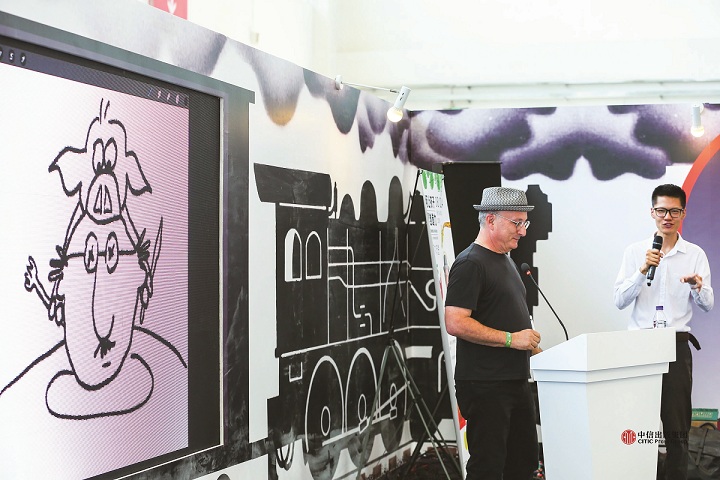
Sylvia Plath is one of the most revered voices in American poetry. She summarised the battle that children and adults face when attempting to be creative. She explained her “worst enemy to creativity” as being that of “self-doubt”. While Plath was a complex person and a grown up, children in Shanghai are facing a very similar plight. Why? Often, it is because teachers always want to see something tangible, measurable and with signs of improvement. Yet we believe that among children art does not need to be criticised; it is often their first attempt at true self expression and should only be encouraged.
In China, there is often a tacit demand for precision, even when creating artwork with three-year-olds – there is a reluctance to accept squiggles. Instead, every picture must be finished as if it were part of a perfect display. It is only now that there is a shift, with more patience being given to the artistic process. Parents and educators alike are acknowledging that children at 3 or 4 do not produce masterpieces. If they do, the likelihood is that the parent has done it for them. Demand for extremely competent work from a budding artist sends the message to the child that they might never be good enough. They start to lose that vital self-confidence required to win the battle against doubt. The point is that art comes from these supposedly meaningless squiggles – in a way, the less it is understood, the more those doodles actually mean.
This is an apt moment to introduce Barney Saltzberg. Like Parents & Kids, Saltzberg is an advocate of encouraging children towards creativity. As an acclaimed children's writer, his opinions carry a lot of weight.
With close to fifty picture books published, Barney Saltzberg has been travelling the world for years, talking about creativity and where ideas come from.
He lectured in China through a cultural exchange program in partnership with the United States’ State Department. Barney is passionate about working with children, parents, teachers and organisations on the art of making mistakes and finding play and creativity in our everyday lives. His books have won numerous awards, including NAPPA Gold Awards, Publishers Weekly and Kirkus Starred Reviews.

Why should your child doodle?
From a young age, Barney's mother gave him the inspiration to draw; she brought him blank sketchbooks, and he filled them with drawings. "I didn't have the distraction of digital devices in those days. I would turn off the electronics and have art time." Barney advocates ways of encouraging creativity in your kids and, although his own children are not artists, having art in their lives helped them develop that inner sense of fearlessness which has equipped them to be successful. Having become a famous writer and speaker, he is often asked to give advice to parents on ways to encourage your child to draw.
"Have a parent put a pencil, crayon, pen, or whatever you draw with, in their non-dominant hand. Make a squiggle on some paper and ask your child to flip it around until they can draw on your lines and make something new. Then have them make you a squiggle and have them watch you create something new. There are no right or wrong answers. Play. Have fun."
There are many inanimate objects, typically found in one’s home, that have inspired Barney's characters and creations. That sense of self-belief and the ability to believe in his own creations and listening to his own inner child has allowed Barney to rise to a great height as a children's author. He is inspired daily by "everything. I see faces in food. In cracks on the floor. In patterns on the tiles. I act on them a LOT! Daily." Growing up, he was allowed the freedom and the free time to explore and to create, and he feels that homework can at times stifle a child's imagination. "Look at how good the schools are in Finland. Children need some downtime. Not to jump on a screen, but to not be ‘working' and feeling the pressure to be the best. Let them play! Play with them! Make art! Make up stories! Sing! Even if you aren't a great singer." Barney is keen to emphasise that there is no secret to unlocking a child's creativity, but the most crucial part is that parents set the right example. If the parent demonstrates an interest in drawing and singing, then the likelihood is that their young child will follow suit. Of course, with teenagers, this theory is entirely inverted.
